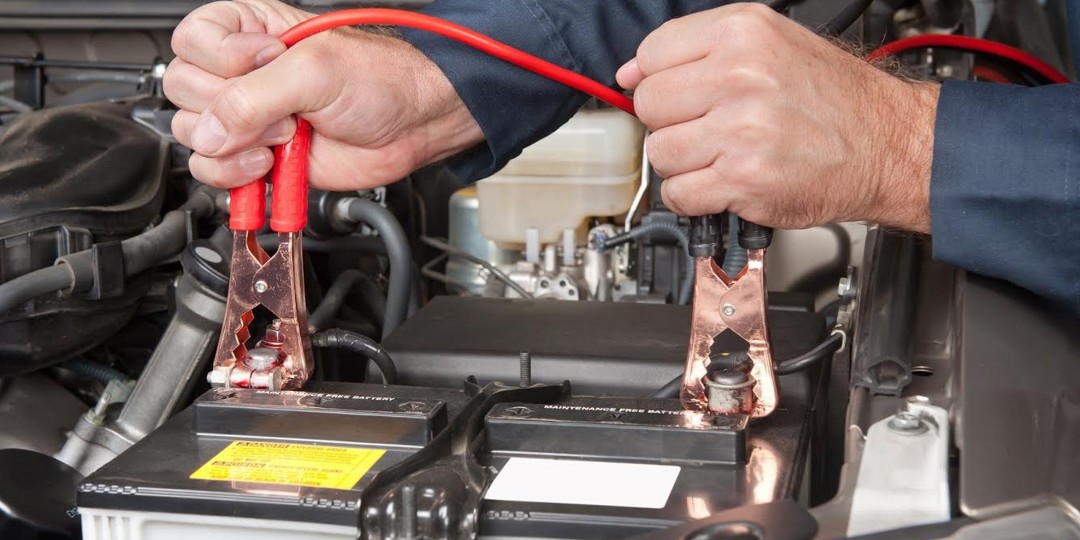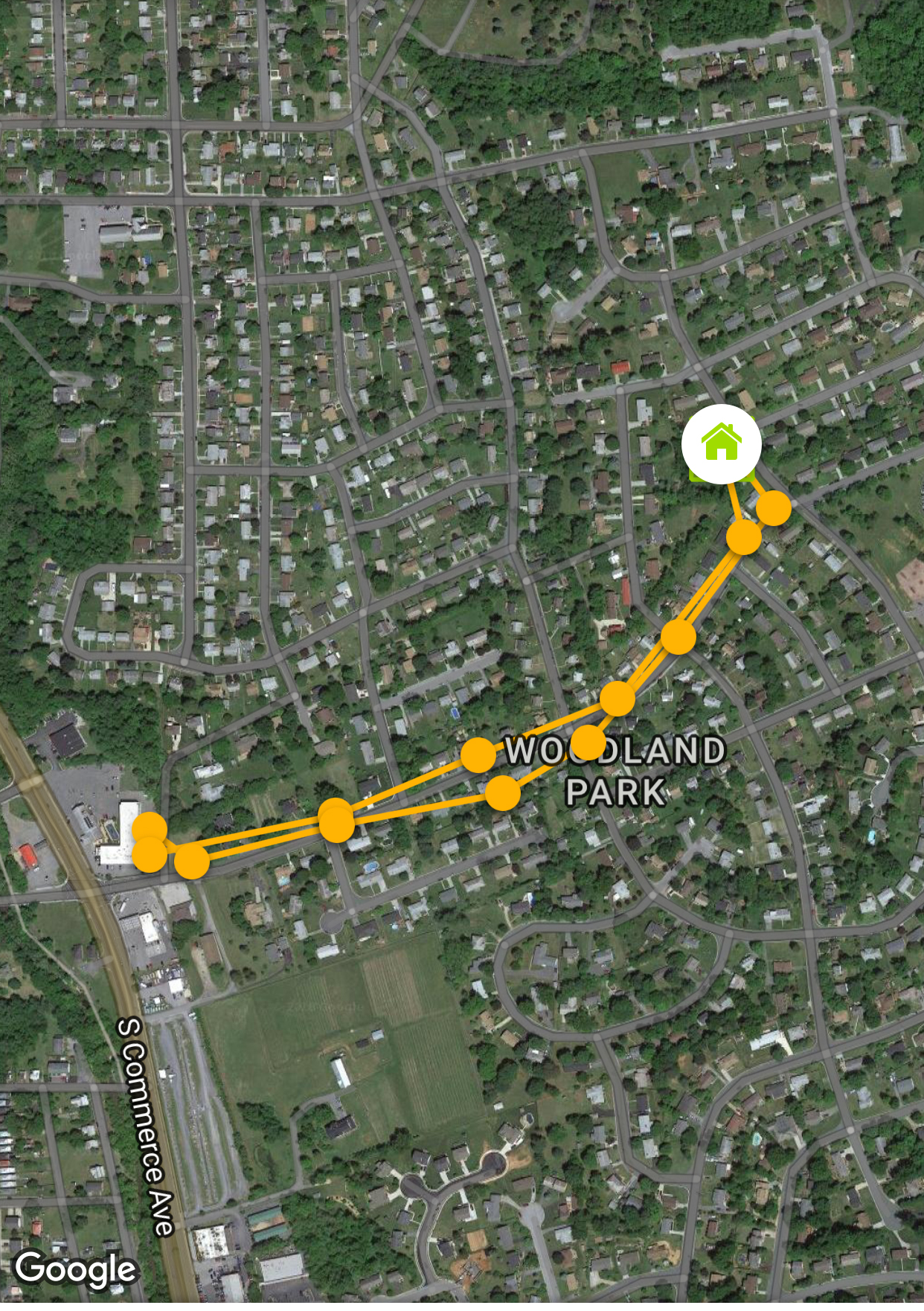
Dead Battery? What Not to Do!
What happened?
Yesterday I planned to take the dog to a nearby dog park, but I would need to drive the car. So we prepared to go to the dog park, and when I tried to start the car, the battery was dead. I quickly discovered that I had left the headlights on the night before.
So what do I do? The car is in the garage facing forward. So I cannot get a jumper-cable from another car, even if I could find someone to do it. So I called a neighbor who I knew, to see if she had a battery charger. She didn't.
It was a nice day, and I remembered that there was an Advanced Auto parts store only about 0.8 miles from my house here in Front Royal, Va. However, it is hilly, with a net drop of about 600 feet from maximum to minimum in altitude. At 86, and due to some medical limitations, walking up hills is a grueling exercise. Nevertheless, the dog needed a walk, so off we went.

First Mistake
Walking the dog down to the auto parts store was fairly easy, since it is mainly downhill (That should suggest something about the return walk.). Being a friendly town, I was allowed to take Coco, my dog, into the parts store, where I began looking at battery chargers. I found one that provided charging at 15 amperes, or a switch position of 100 amperes for starting an engine with a dead battery. That was perfect. So I bought it.
The downside was that this charger was heavy, about 20 pounds, and it would not fit well into the plastic bags. So they let me take one of their baskets. Here I was, dog on a leash, and basket with heavy charger, walking up hill for 0.8 mile.
Rest Stop.
Starting the Car with the Charger?
When we finally arrived back home, I unpacked the charger, read the instructions, and properly connected cables to the battery terminals, and set the charger to charge at 15 amperes. After about two hours, I went back out to start the car. But the battery was still dead. The car would not start.
Well, then, brute force needed, right? So I switched the charger over to the 100 ampere setting, which is far more than a starter requires, and tried to start the car. The car still would not even turn over, as though on a dead battery. So I disconnected the cables from the engine to the battery and carefully cleaned the terminals with a wire brush, and the inside of the terminal connectors as well with sandpaper. Then I added distilled water to each battery cell, although none were empty at the start. I then put everything back together, and tried to start the car again with the 100 amperes switch position. Again the car would not start.
Now I was angry. I called the parts store and told them about their lousy charger and that when I could get my car started, I was bringing it back for full refund.
What to do next?
The neighbor was gone, and I knew nobody else nearby. My son and granddaughter, who live 15 miles away, were at work. They could not help. Even if I could go out into the street and stop a car and ask for help, what could they do?
I needed to get the car down onto the street. Therefore, I put the car in neutral,and opened the driver's door and with one foot out and one foot in, began to push the car backward. If I could get it out about 15 ft, it would roll down our rather steep driveway.
I quickly found that steering a car not running is no easy task, since it has no power steering. Also, the power brakes are no longer acting, so brakes had to be pushed much harder.
But I did manage to get the car to roll down the drive, and I could turn the wheel and made the car back around so it was not totally blocking my street. Then I began to try to push the car forward with the wheel turned to move the car further from blocking the street.
It was then that two men in a pickup truck saw my plight and stopped to help. I had a jumper cable set, and they offered to jump the battery with their truck. So with the help of these nice people, the car started immediately.
I drove down to the auto parts store and returned the charger, receiving a full refund.
After letting the car run for an hour or so, I found that it would start quickly, and that the battery was fine, and that short of leaving the lights on again, I will not have this problem again.
In Retrospect
As I thought about the fact that the charger failed to start the car, I began to think about the physics. Why would it neither charge the battery nor start the car?
It's the internal resistance, stupid!
Then I remembered my physics and what I knew about those chargers.
First, for very good reasons, chargers are made to require a certain terminal voltage in order to work at all. If that voltage is not there, the charger will not work.
Even a dead battery has terminal voltage. But if you connect anything to the battery, even something that draws only an ampere or so, the terminal voltage can drop quite a lot. This is because of internal resistance. For a fully charged battery, that resistance has almost no effect on the terminal voltage. But for an almost fully discharged battery, like leaving the headlights on overnight can cause, that internal resistance could easily lower the voltage by 3 or 4 volts with just a few amperes passing through external circuits and the battery.
So, What is the Lesson?
I feel so stupid. Even with the ignition switch off, cars still have a few circuits that draw current, like the clock, or the internal lighting when the car door is open. They needed to be disconnected. All I had to do with the charger was to have disconnected the car's terminal connectors from the battery, connected the charger connectors to the battery, and since there is no external current pulling down the terminal voltage, the charger would correctly charge the battery, and everything would have worked fine.
What is so interesting is that the instructions for the charger do not suggest that the battery should be disconnected from the car before using the charger.
Online, a search shows almost nobody saying that it is necessary to do so AS LONG AS THE IGNITION SWITHCH IS OFF. The latter may be true for batteries not completely discharged initially, and for cars that do not have anything drawing current with the ignition switch off. But for most cars, there are several functions that continue to draw current, even though small, and with a nearly dead battery, that current, with an internal resistance of the battery, can give an IR drop (voltage drop) quite large, reducing the terminal voltage so low that it will not permit a charger to function.
